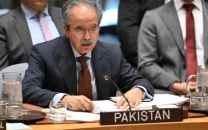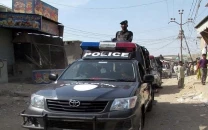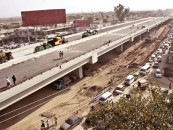A landmark decision
Supreme Court has upheld rule of law and preserved the sanctity of the Constitution

The Constitution of the Islamic Republic of Pakistan, which was unanimously passed by Parliament in 1973, was authored by my late father, Abdul Hafeez Pirzada. The Constitution mandates three organs of the state – the Legislature, the Executive and the Judiciary. Article 25 in the Constitution derives from the principle of the rule of law that all citizens are accountable to the same law and that no one is above it. The primary function of the Judiciary is to act as the custodian of the rule of law.
The events that transpired on Sunday, April 3rd, leading up to and after the vote of no confidence which was to be held in respect of the Prime Minister, are matters of fact and were observed by the public en masse. Instead of allowing the vote to take place under the provisions of Article 95(2) of the Constitution, the Deputy Speaker of the National Assembly “disallowed” and “rejected” the motion.
In a flurry of events that ensued thereafter, the Prime Minister, within minutes of the Deputy Speaker’s “ruling”, addressed the nation and stated that he would be advising the President to dissolve the National Assembly, pursuant to which, the said advice was forwarded to the President, who then approved the same and shortly thereafter, dissolved the National Assembly.
Eyebrows were raised as to the abrupt manner in which the aforementioned steps were taken; the answer to which lies in Article 95 of the Constitution itself. A reading of the explanation in Article 58(1) discloses that the only situation under which a Prime Minister cannot advise the President to dissolve the National Assembly is when the notice of a resolution for a vote of no confidence has been given but is yet to be voted upon. As it appears, the Opposition seemed to have the requisite numbers as per Article 95(4), i.e. a majority of the total membership of the National Assembly, in order for the motion to succeed.
With the prospect of the vote of no confidence being passed against him and at the same time, unwilling to resign, the Prime Minister found himself in a predicament. Regrettably, it appears that in order to circumvent Article 58(1) a course of action was opted for, which resulted in a grave violation of Article 95(2), which mandates that a vote of no confidence must be voted upon, no less than three and no later than seven days from the day on which it is moved. There is no provision under the Constitution by which a Speaker, leave alone his Deputy, can “reject” or “disallow” a vote of no confidence.
Concerned by this chain of events, the Supreme Court of Pakistan, on Sunday afternoon, exercised its suo moto powers under Article 184(3) of the Constitution and whilst ordering for the formation a larger bench, issued notice to the relevant stakeholders for the very next day, pursuant to which they appeared either in person or through their legal representatives.
The proceedings were heard on a day to day basis, with public speculation and expectation centered on the final order to be passed by the Court. This is because in the past, the Supreme Court has adopted divergent stances when faced with the issue of extra-constitutional measures being employed to dissolve the National Assembly and the subsequent call for fresh elections.
In 1993, the Supreme Court held that the dissolution of the National Assembly by the President was unlawful and void and as a consequence thereof, restored the National Assembly and the Cabinet. However, in 2000, the Supreme Court, whilst relying upon the now infamous “doctrine of necessity”, directed for the holding of general elections within a period of three years.
The present proceedings in Suo Moto Case No. 01 of 2022 concluded on Thursday, with their Lordships informing that an order would be announced that evening. To say the least, the entire nation, leave alone the legal fraternity, awaited the outcome of the order, with uncertainty but an expectation that the rule of law and the Constitution would prevail over the unreasonable “ruling” of the Speaker and all subsequent actions taken in pursuance thereof.
As news broke that the Election Commission of Pakistan had been summoned to the Supreme Court and questioned about timelines for the holding of elections, the suspense levels rose. Which path would the Supreme Court follow?
Ultimately their Lordships re-assembled and through a unanimous decision, held that the ruling of the Deputy Speaker and all subsequent acts taken by the Prime Minister and President to dissolve the National Assembly were all contrary to the Constitution and therefore, of no legal effect, as a result of which, the National Assembly stood restored. Most importantly, the Speaker of the National Assembly was directed to hold the vote of no-confidence, as mandated under Article 95, no later than 10:30 am on April 9th, 2022.
In what is sure to become a landmark decision in the pages of history, the Supreme Court, has upheld the rule of law and preserved the sanctity of the Constitution, particularly the right to a democratic vote which had been otherwise extinguished by the illegal acts of the Deputy Speaker. The verdict of the custodian of the rule of law is clear and unequivocal; no one is above it. The author of the Constitution would have been very proud today.
The author is a Barrister at Law and an Advocate of the Supreme Court of Pakistan.



















COMMENTS
Comments are moderated and generally will be posted if they are on-topic and not abusive.
For more information, please see our Comments FAQ